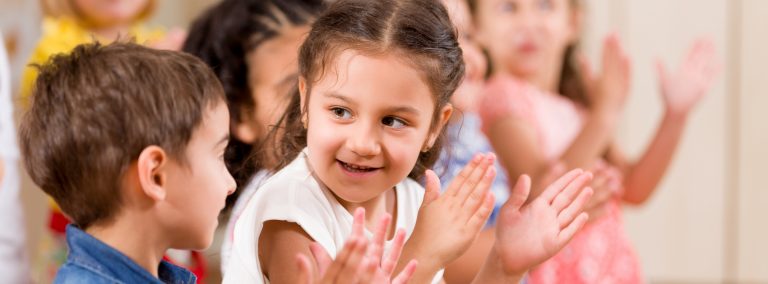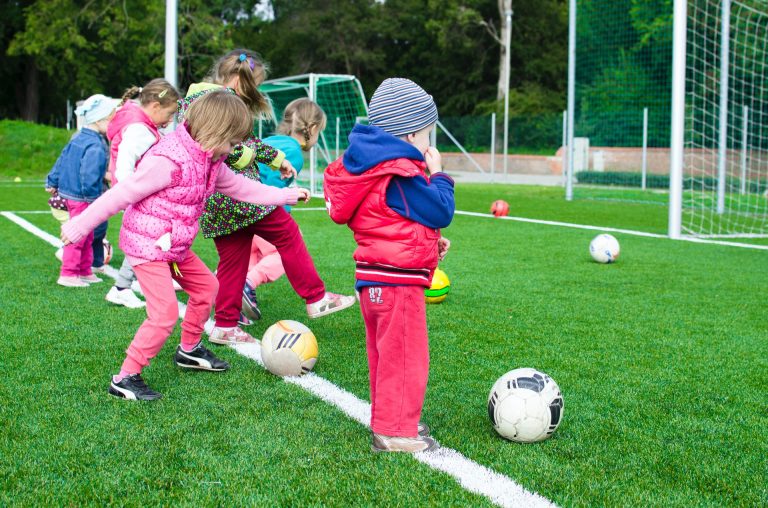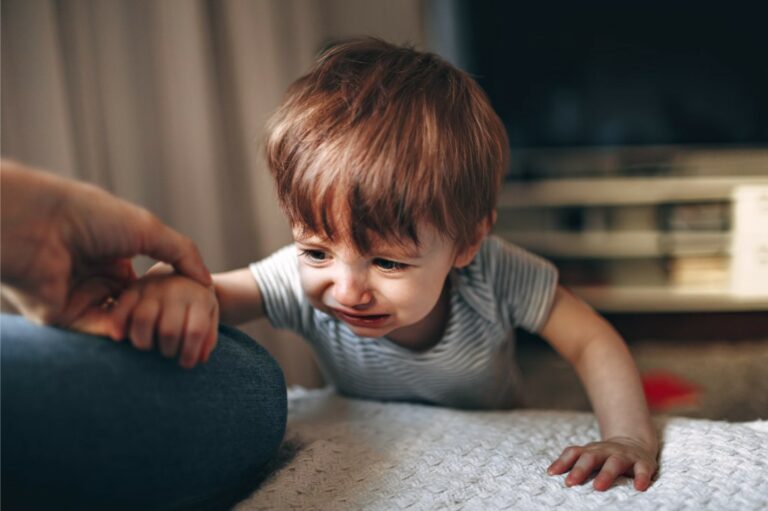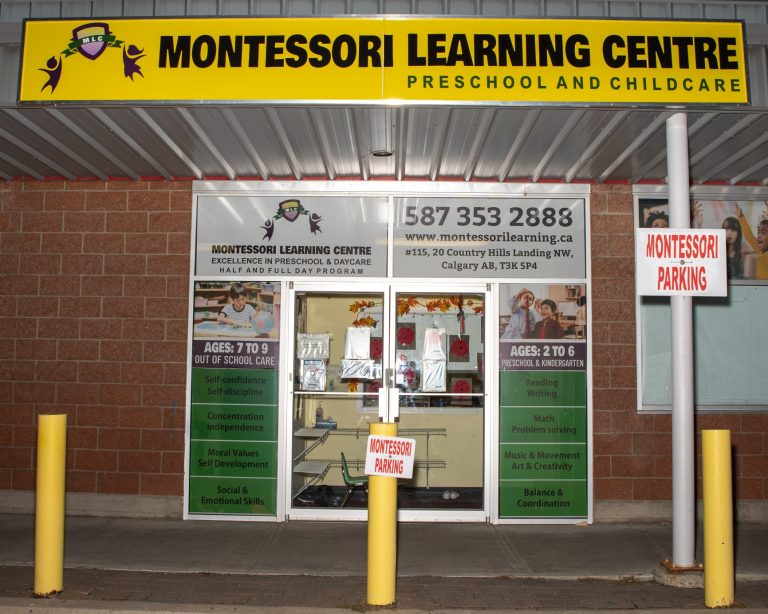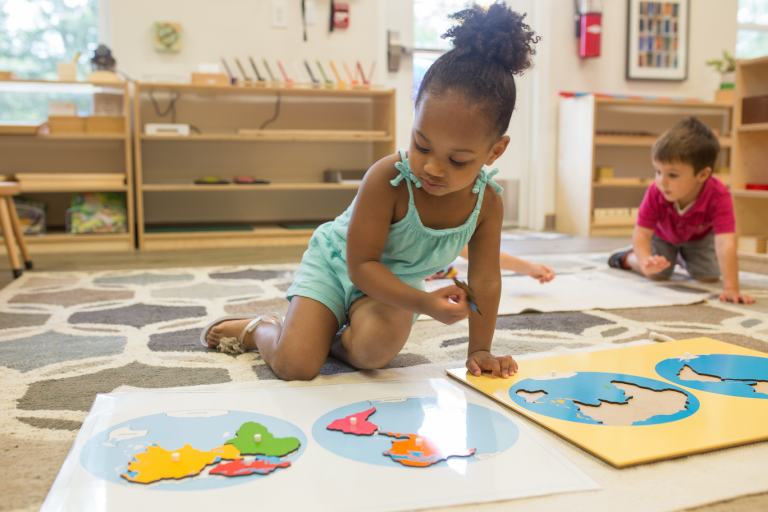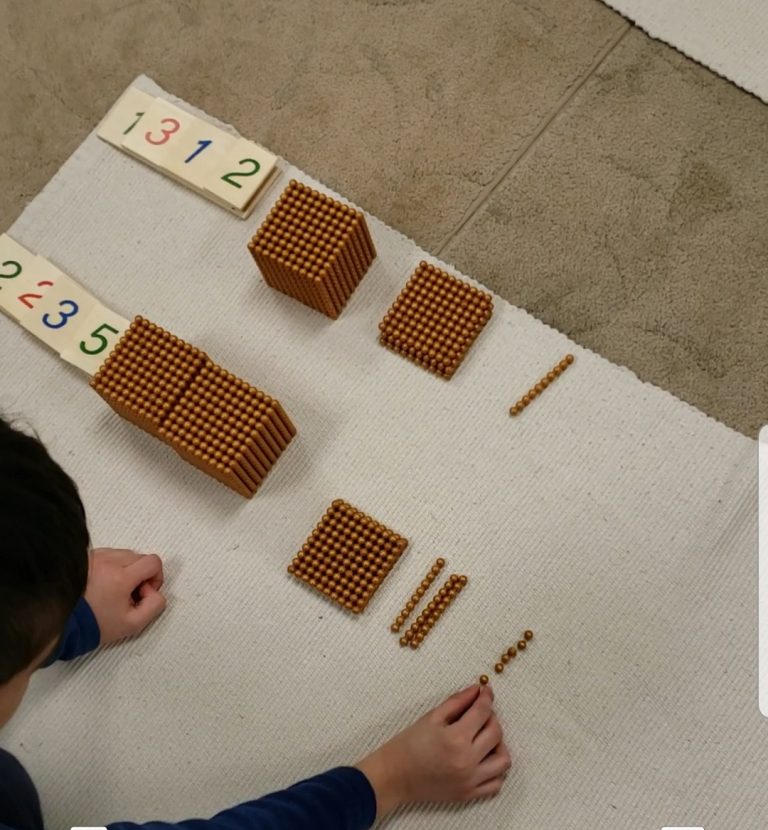Montessori’s Unique Advantages for Early Childhood Education
The Montessori teaching approach inspires educators and parents alike in early childhood education. Not only has this method endured the test of time, but it also has led to a child-centered and hands-on learning model.
This post will examine what makes the Montessori teaching model unique in early childhood education and its advantages.
Montessori Teaching Method: An Overview
An Italian physician and educator, Dr. Maria Montessori, developed the Montessori teaching method. Dr. Montessori was a visionary who lived from 1870 to 1952. She broke down gender barriers by enrolling in an all-boys engineering school. Dr. Maria Montessori changed her mind and shifted to medical school, finally earning her medical degree.
Education was one of her special interests. She observed children closely and noted that many did poorly in schools. Hence, she decided to probe deeper into the root cause of their failure.
She ultimately concluded that the monotonous curriculum the children followed needed more innovation. Dr. Montessori observed that the rigid educational curriculum erased every child’s uniqueness. Hence, it was suppressing their ‘inner child.’
Dr. Montessori embarked on a mission to revolutionize the curriculum and created the Montessori teaching method. In this program, children can learn via doing in a secure and positive environment. Therefore, a top priority is ensuring children develop physically, emotionally, socially, and cognitively.
Although several schools use ‘Montessori,’ the original method comprises of seven fundamental components. These components are:
- A discovery teaching model enables children to learn things without traditional instructions and from working with the material.
- A prepared environment where subject areas are arranged logically and according to the child’s needs.
- Mixed-age classrooms with children from ages three to six years. The age groups can range from six to nine, twelve to fifteen, and fifteen to eighteen.
- Freedom in the classroom for children to express themselves, create, and explore
- Unique teaching materials are produced from natural substances like cloth, wood, and earth. No use of artificial materials like plastic.
- Students select their activities from a variety of options.
- Continuous blocks of time for children to discover and explore at their own pace.
Now, let’s discover the benefits of the unique Montessori teaching method for early childhood education.
Montessori’s Unique Benefits for Early Childhood Education
Child-Centered Approach
The core tenet of the Montessori teaching method is that every child is a unique, self-directed learner with a natural curiosity. Children can follow their genuine interests and develop at their own pace in the Montessori environment, created to give them more freedom.
Parents can be more satisfied in a Montessori school, knowing their children follow a curriculum customized to their unique needs. As a result, their children have the freedom and opportunity to learn by exploring and discovering new things independently.
Children can access everything in the classroom with ease. All materials and even furnishings are of an appropriate size for maximum comfort.
While traditional classrooms in conventional schools are also set up for young children, the teacher may not allow them to enter designated craft or play areas.
Montessori teachers operate as guides, observing and assisting the child’s learning process rather than imposing a strict curriculum. This child-centered method fosters self-motivation, independence, and a love of learning, all essential for success in life.
Self-Directed Learning
The idea that children have a natural drive to learn is one of the fundamental beliefs of the Montessori teaching method. Children in Montessori classrooms can select their activities and go at their speed. That implies children are in control of their learning activities, thanks to the autonomy and sense of responsibility that self-directed learning creates.
Consequently, they acquire the ability to think critically and solve problems. Moreover, they experience a great sense of satisfaction when they participate in hands-on activities or make decisions.
Prepared Environment
The Montessori classroom is methodically set up to give young learners a motivating and inspiring environment. Furnished with carefully selected and age-appropriate materials, everything in the school supports the child’s developmental requirements and sparks curiosity. Aesthetically beautiful materials and purposeful activities encourage children to learn.
Each component of this prepared environment has a distinct educational purpose and stimulates the child’s senses. Hence, Montessori promotes social, cognitive, and emotional development. For example, the resources in the classroom may include mathematical manipulatives, sensory objects, language materials, etc.

Mixed Age Grouping
Generally, Montessori classrooms are comprised of mixed-age groups, unlike standard schools that divide students by age. This deliberate mixture of ages promotes a cooperative and supportive environment where younger children can learn from older ones, and older children can solidify their learning by passing on knowledge to younger classmates.
These engaging conversations promote a civic sense, compassion, and a sense of belonging. Younger children are inspired by the achievements of older children, and older children develop their knowledge and leadership skills by mentoring their younger classmates. In addition, mixed age groups help youngsters prepare for social interactions outside the classroom. Such a conducive learning environment is the perfect setting for learning new skills and concepts.
Emphasis on Practical Life Skills
The Montessori teaching method emphasizes the value of equipping young children with valuable life skills. The Montessori curriculum includes practical life skills, including buttoning, pouring, sweeping, and cooking. Children learn practical life skills from hands-on activities, supporting their physical, mental, and emotional growth.
Exercises based on real-world situations instill independence and improve fine and gross motor abilities. As a result, children have better focus. Children also develop self-respect and a healthy self-image.
Focus on Sensorial Development
Dr. Maria Montessori believed young children learn most effectively through their senses. Therefore, various sensory materials are available in Montessori classrooms to help children develop and cultivate their senses. Children can use these items to explore ideas like form, size, color, sound, and texture. These materials include geometric solids, color tablets, and tactile materials.
Children acquire observational skills, the ability to categorize and organize things, and an increased sense of perception through sensory experiences. In addition, these sensory materials establish the groundwork for language, mathematics, and other types of learning.
Integration of Life Skills and Academics
The difference between real-world skills and academic learning is hazy in a school that follows the Montessori teaching method. Typically, the curriculum combines educational material with practical applications. For instance, manipulatives serve as teaching tools for mathematical concepts and phonics, while reading promotes language development.
This comprehensive method guarantees that children comprehend the significance of their studies, motivating them to use what they have learned in real-world situations. In addition, children develop profound comprehension and love of knowledge through the Montessori teaching method.
Better Language Skills
When children are in their early years, their vocabulary is still rapidly growing. That’s when their participation in teacher-led activities can make quite a difference. In a conventional kindergarten environment, the teacher usually teaches concepts through play.
In Montessori schools, teachers encourage young children to communicate while working.
Traditional preschoolers have less opportunity to talk and play with their peers in a structured environment. In the Montessori environment, as a child moves around, they are free to interact with other students, building the power to communicate with peers and adults on their terms.
However, teachers in Montessori schools encourage children to communicate while working. As a child continues to learn in the Montessori environment, they freely interact with other students, developing the ability to communicate with adults and peers.
As parents and teachers, we can give our young learners a solid foundation for success and promote their learning skills in a nurturing and enriching environment by embracing the practices of Dr. Montessori’s teaching model.
Famous Montessori Students
The Montessori Method of education relies on something other than rote memorization and develops thinkers and leaders. Since these students are taught to learn by making mistakes, practicing, and learning with other children, they will likely ascend to the top.
The Montessori teaching method continues to launch future leaders. Here are some of the world’s most renowned people from different areas of life who studied under the Montessori teaching method.
- Jeff Bezos, founder of Amazon. Bezos also chose Montessori education for his children and ran Bezos Academy, a non-profit organization. The mission of this organization is to set up and operate a network of tuition-free Montessori-inspired preschools in underprivileged communities.
- Larry Page and Sergey Brin, founders of Google
- Peter Drucker, business guru
- Katherine Graham, former editor/owner of the Washington Post and Pulitzer Prize-winning author
- Beyonce Knowles, 16-time Grammy Award-winning singer and songwriter
- Taylor Swift, Grammy-winning songwriter/singer and recipient of the Entertainer of the Year Award at the 45th Annual CMA Awards
Final Thoughts
Montessori education emphasizes that each child’s developmental requirements and learning styles are unique. Therefore, teachers observe every child’s progress and provide customized instructions.
Montessori educators value children’s intrinsic potential and treat them as individuals with distinct interests and strengths. That’s why children taught under this model exhibit strong leadership abilities as adults.
For a unique childcare and Montessori Early Childhood program contact Montessori Learning Centre at https://montessorilearning.ca
Tel 587 353 2888 or reach us at [email protected]



